
Stay Safe: 8 Ways to Protect Your Smart Home From Hackers
Your smart home is a futuristic marvel. But when cameras may be hacked to spy
2023-10-15 02:20
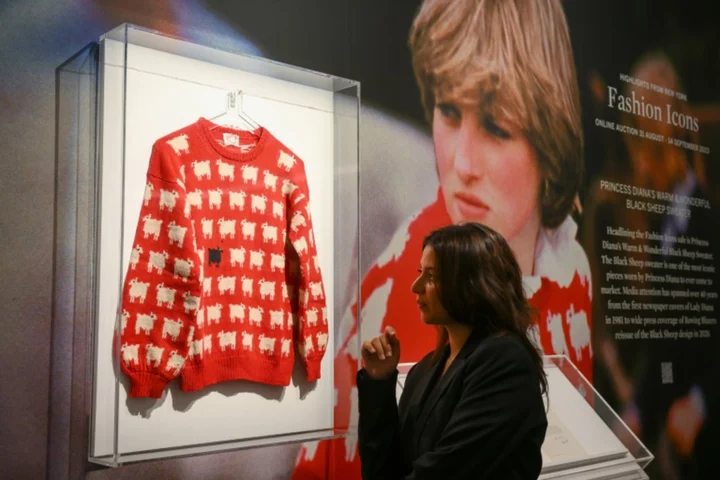
Princess Diana's 'Black Sheep' sweater sells at auction for $1.1 mn
An iconic red sweater worn by Princess Diana shortly after her engagement to then-Prince Charles, featuring rows of fluffy little sheep, sold at auction for more than $1.1 million following a frenetic...
2023-09-15 01:52
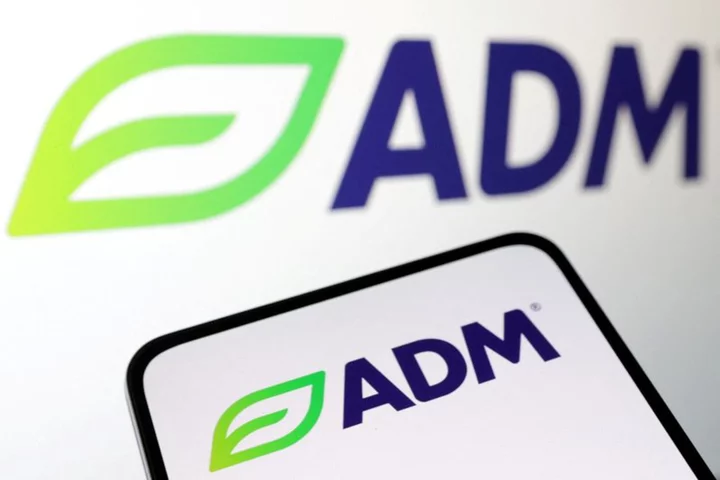
Grain trader ADM's quarterly profit tops estimates
(Reuters) -Archer-Daniels-Midland beat Wall Street expectations for second-quarter profit on Tuesday, as the grain trader and processor benefited from tight
2023-07-25 19:16
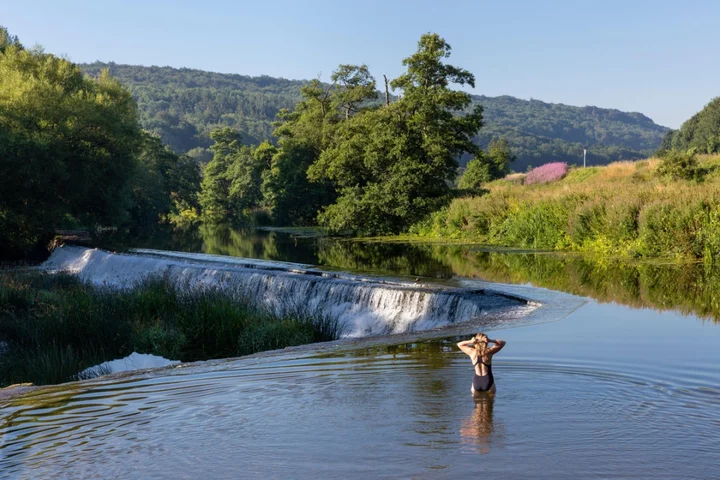
Wild swimming: When is it safe to go in?
When warmer weather arrives, many of us feel the urge to cool off with a refreshing dip at the nearest pool, pond or beach. A paddle is a pleasant way to beat the heat, it can boost your health too. “The benefits of swimming and dipping in open water are well documented,” says Lee Heard, charity director at Royal Life Saving Society UK. “Not only does being in or on open water allow new adventure, it also has documented benefits for both physical and mental wellbeing.” Research from Next found that 33% of people would look to wild swimming to find relief from muscle aches and pains, while 28% of those facing stress see it as a remedy. “Many of us only swim outdoors during the summer season,” says Ella Foote, founder of The Dip Advisor and author of How to Wild Swim: What to Know Before Taking the Plunge. But just because the sun is out doesn’t mean wild swimming is less dangerous, she says: “Learning to swim at some point in your life isn’t enough and being a fit, healthy person on dry land isn’t the same as being water fit.” There were 226 deaths in the UK from accidental drownings in 2022, according to the RNLI. Heard says: “The basic principles of open water safety, combined with knowledge and understanding of the hazards, can increase the enjoyment of open water and significantly reduce the number of incidents that occur each year.” These are the safety considerations to take into account before deciding whether to wade in… Look for lifeguards “There are a great number of open-water sites which are lifeguarded and we would urge people to go to lifeguarded venues if they are looking to take part in open water swimming,” says Heard. Use the RNLI website to find your nearest lifeguarded beach. “Lifeguards are trained professionals who can ensure your safety whilst out on the water and provide assistance should you need it,” Heard continues. “There are also a number of organised events around the country which have lifeguards on duty, so we urge people to attend those events.” Check the conditions If you’re swimming somewhere without a lifeguard, you must be aware of the potential risks.”If swimmers are aware of the potential risks and dangers, then this enables them to do a risk assessment before entering the water,” says Heard. Risks to consider include, he says: “The depth of the water – this changes and is unpredictable; underwater objects and hazards may not be visible; strong currents can rapidly sweep people away; and uneven banks and river beds.” “The weather is more changeable in coastal areas; wind can make a huge difference in the sea and how it behaves,” says Foote, who recommends checking the Tide Times or Surfline websites and following RNLI advice on rip currents. “If you plan a river swim it is worth remembering that water travels faster when a river is shallow, narrow or after spells of heavy rain,” she adds. Know your limits “Can you tread water while keeping your head above the water? Can you float on your back? Could you swim 25 meters without stopping?” asks Foote. “These are the very basic skills for keeping yourself safe in open water and if you are unsure – don’t get in.” While it can be tempting to plunge in on a hot day, never jump or dive without testing the water first. “Enter within your depth and get a feel for the water before swimming,” Foote continues. “Ensure you know where you plan to get out before getting in, sometimes it is easier to get in the water than get out.” And always trust your instincts: “If you’re at the water and something doesn’t feel right, trust that. If the water doesn’t look, or smell right, don’t get in. Outdoor swimming is joyful, but be safe.” Beware of the cold “The shock of cold water can make swimming difficult and increase the difficulty in getting out of the water,” Heard says, even during hot weather when water temperatures are rising. “The water will always be cooler than your core body temperature, so you will experience a gasp and chill on entry,” says Foote. “While it might be warm in the shallows, in deeper water it will be cold at the bottom and that can feel very different when jumping in, which can cause cold water shock and be fatal. “This is also true in coastal areas – the sea is still cool at this time of year.” Don’t trespass Choosing where to swim isn’t just about finding a safe and picturesque spot – you’ve got to make sure you’re not trespassing on private land. “As a rule, avoid reservoirs and quarries – they are often private facilities and are not designed for swimming,” says Foote. “As well as trespassing, many have steep sides and while you might get in okay, getting out can be harder. Some reservoirs have damns, towers and aerators that present a real risk to swimmers.” You should always check whether you’re allowed to swim in a lake in a national parks. The NOWCA network lists safe open water swimming venues. Take the right kit Depending on the weather and water temperature, you may need more than just a bikini or shorts for your swim. “We always recommend going swimming with a friend, wearing appropriate clothing such as a wetsuit, a tow float and a bright-coloured swimming hat,” says Heard, so that you’re more visible if you need help. And don’t forget that while a rush of endorphins can help when you’re in the water, you may feel more chilly once you get out. Heard adds: “It’s vital to also ensure that when you get out you have appropriate clothing to keep you warm after the swim.” Read More Charity boss speaks out over ‘traumatic’ encounter with royal aide Ukraine war’s heaviest fight rages in east - follow live Prince of Wales to launch initiative aimed at ending homelessness Beatrice enjoys Glastonbury as princess is spotted on final day of festival Kate triumphant after Frankie Dettori’s win at Royal Ascot
2023-06-26 15:17

The #@!*~ Most Swear-Filled TV Show Finales of All Time
The Roy family of 'Succession' is pretty foul-mouthed, but are they the filthiest TV characters?
2023-06-03 06:17

Is bottomless prosecco going to be killed off by climate change?
Picture this. The group chat has finally settled on a date and we are going out. Out out. Women of most ages know how serious this is. There was probably a spreadsheet involved. Boyfriends and husbands have been dispatched to the pub. Children and dogs have been dropped off at the sitter. Dignity has been left at the door. One of us is waiting for it to be cancelled so we can stay at home with our loungewear and girl dinners (it’s probably me). There’s only one thing for it. Bottomless brunch. Many Asos orders and outfit changes later, we arrive, take our seats and start the binge drinking timer. There’s only one problem. No prosecco. Freshly manicured fists pound the table. The elected Karen of the group starts to verbally pulverise the staff. Eggs Benedicts are thrown against the walls. The Prosecco Huns exclaim in unison: “But what are we going to drink now?!” The waiter bashfully suggests: “Spumante?” Give over. According to a new study, this could be a reality in the near future thanks to climate change threatening vineyards across Europe, in particular those dedicated to glera (the beloved prosecco grape) in Northern Italy. In a detailed report in iScience last month, researchers warned that unpredictable weather, soil degradation and drought could lead to the loss of a millennia-old winemaking tradition, and the livelihoods attached to it. RIP the Prosecco Hun. The Italian sparkling wine has long been the fizz of choice in the UK (we were only dethroned as the world’s biggest prosecco guzzlers last year by the US). In the early 2010s, more than a third of all the prosecco shipped out of Italy worldwide ended up in Britain – approximately 131 million bottles a year. That’s nearly two bottles per Brit. You get the idea. The origin of our obsession with prosecco dates back to just after the 2008 crash, when consumers were looking for an alternative to expensive champagne. The softer tasting, far more affordable (thanks to its cheaper and speedier production time) and incredibly quaffable prosecco was the obvious choice. Bottomless brunch was born. “My heart goes out to the huns whose weekends simply aren’t complete without a bottle of prosecco,” Hannah Crosbie, founder of Dalston Wine Club, laments at the news that just 15 years after it stormed onto supermarket shelves, prosecco might be quietly forced to say arrivederci. “In all seriousness though, climate change is seriously threatening every aspect of winemaking, and growing conditions are only getting more challenging.” Prosecco is certainly not the only vino at risk, but it faces a unique issue. Where other wine growing regions affected by climate change such as Champagne and Burgundy can simply put out a limited run with an inflated price tag and keep the snobby oenophiles coming, prosecco’s USP is its ability to produce in bulk and at a fraction of the cost. English sparkling is a big winner with the climate going the way it is. Prosecco, by all accounts, seems like it’s a bit of a loser in that regard Will Amherst, head wine buyer at Trullo Ali Finch, group sommelier at Angela Hartnett’s Michelin-starred Italian restaurant Murano in Mayfair, doesn’t believe there’s an appetite for a higher quality, more expensive prosecco. “With the impact of the climate as well as the cost of producing wine increasing, the challenge for prosecco is going to be how to balance the expectation of its price point with the need to make slightly smaller quantities,” she tells me. “Regions like Chablis, for instance, have had multiple horrible vintages back to back and people just accept the fact they have to pay more for it if they want to drink that wine.” For the uninitiated, the word “vintage” on a wine label simply means the year the grapes were harvested – compared to regular wines that may include grapes harvested in multiple years – and each vintage can taste vastly different based on the conditions affecting the grapes in that year. Chablis, produced from chardonnay grapes in the northernmost district of Burgundy, has always been particularly affected by the climate due to its geography, but in recent years has seen frost in 2016, 2017 and 2021, and drought and higher temperatures in 2019 and 2020. This has dramatically affected those vintages, and driven up the price of bottles from “good” years. But with prosecco, “people potentially wouldn’t be interested in” paying a higher price, Finch says. This is partly because its brand has become more associated with cheap fizz than fine wine in Britain. Part of the problem also lies in the simplicity of its production. Prosecco is a wine that reflects the aromatics of the grape at the point of harvest, whereas with other sparkling wines like champagne, as well as other types of wine in general, such as chablis, it’s about the ageing process. Rising temperatures mean grapes are ripening more quickly, which can result in a different flavour of wine or too much alcohol, so one option is to harvest the grapes earlier. You can get away with a slightly under-ripe fruit in aged wines as so much of the flavour is added during their long fermentations. In prosecco, a bottle of which is ready in just 30 days, an under-ripe grape could result in something that “tastes a lot like battery acid”, according to Finch. The Prosecco Huns don’t want to chug something flavourless and eye-wateringly alcoholic with their eggs Benedict. “If you pick too early, you’ve got no flavour,” Finch explains. “So they don’t really have the option to just keep making it in the same volume. With other wines, you can do more work in the winery to make the wine feel more balanced and more approachable and more complex. They don’t have that luxury in prosecco.” Under Italy’s DOC (Denominazione di Origine Controllata) laws, prosecco is only prosecco when it comes from just two regions of the country, Veneto and Friuli-Venezia Giulia, and adheres to strict growing and production rules. The same goes for champagne: only wine produced from eight permitted varieties of grape grown exclusively in the Champagne region of France may be called champagne. It’s these “heroic viticulture” sites that the report says are most at risk. Naming rights have been a point of contention across the whole wine industry for some time, with Australian producers of glera recently putting in a request to the EU to be allowed to call their wine prosecco on the grounds that it’s part of their migrant and cultural identity. Ironically, the glera grape is actually believed to be Slovenian in origin, and was first cultivated in the vineyards of Prosecco, a small village in the Friuli-Venezia Giulia region near the border with Slovenia. The name is even thought to derive from the Slovenian words preseka or poseka, or the Serbian/Croatian prosek, meaning “path cut through the woods”. While DOC laws might prevent anyone calling a sparkling wine made from glera grapes outside of the designated regions a prosecco, it hasn’t stopped winemakers around the world from essentially producing the same wine using the same techniques. As climate change has made it increasingly difficult to cultivate the grapes in their historical home, it’s also made conditions in more northern regions like the UK more favourable for the growing of certain grapes, including white varieties such as glera, opening the door to a whole new generation of winemakers. “This is not me saying this is the death of prosecco,” Finch adds quickly, but she stresses that the wine industry is naturally very dynamic. “There are loads of alternatives to prosecco, both within Europe in terms of pet nats and cremants and things like that, and with the New World as well.” Pet nats – sparkling wines made using the “traditional method” of fermenting in individual bottles – have become very trendy among the younger Gen Z crowd, she says, as it still offers something bright, fruity and super fizzy, but without the faff, or price tag, that comes with champagne. People are also drinking less but are happy to spend a little more and not drink as much. At Murano, Finch says diners are asking about English sparkling wines more than ever before. “The correlation, obviously, with post-Brexit is there. There’s a desire to try and drink more local wines, potentially from a sustainability point of view, potentially from a cost-to-quality point of view because of duty increasing. It’s also partly because during Covid people did a lot of staycations and UK wine tourism did very well during that time. And it sort of stuck.” It’s a sentiment echoed by Will Amherst, head wine buyer at Italian trattoria Trullo in Islington, north London. “I don’t want to bash prosecco too much, but if I was going out and I wanted sparkling wine, I would still look at champagne,” he says, much to the chagrin of the Prosecco Huns. “And if I’m going to look somewhere other than that, I would get a bottle of English sparkling. Because English sparkling is a big winner with the climate going the way it is. Prosecco, by all accounts, seems like it’s a bit of a loser in that regard.” Prosecco and the people that produce it are certainly not the only losers but its high-altitude, cooler temperature geography, which previously protected it from climate change, is now adversely affected by extreme weather. Sudden, intense rainfall damages the soil and creates “slope failures”, while conversely droughts make irrigation extremely difficult. While he’s yet to see a knock-on effect on prosecco supplies at Trullo, Amherst’s “immediate thoughts were, really sadly: is prosecco going to be able to pull itself out of that hole? I don’t know how you reconcile the spiralling production costs and the brand identity, which is synonymous with cheap wine in this country,” he says. Although it’s not recommended to keep prosecco longer than two to three years before it goes flat – compared to up to 10 years for vintage champagnes – he doesn’t anticipate stocks to run down soon. At any rate, his biggest use for prosecco at Trullo is in an Aperol Spritz, where it makes up half the drink. He actually sees it as an exciting opportunity for new wines to emerge. So does Will Hill, a wine buyer at online merchant Honest Grapes, who tells me: “Once again, cava is showing that there is great value to be found in traditional method sparkling wines and more and more we are seeing ‘prosecco-esque’ wines for lower prices. If the consumer isn’t tied to the name ‘prosecco’, there are plenty of good, affordable, entry-level options available.” It’s clear that wines of all colours are facing an uphill battle (quite literally in prosecco’s case), not just to survive but to protect their identity, which for prosecco is arguably more important. That could spell the end of the Prosecco Hun, but with English sparkling and other European varieties on the rise, perhaps it just means a rebranding is in order. Cremant Crew? Pet Nat Posse? They don’t have quite the same ring, but it won’t stop us booking bottomless brunch anytime soon. Read More I feel it in my fingers: Why more of us should start eating with our hands Pizza, cake and meringue martinis: When did cinema food get so silly? Michelin-starred chef Simon Rogan on 20 years of L’Enclume: ‘It all started with a radish’
2023-09-06 15:29
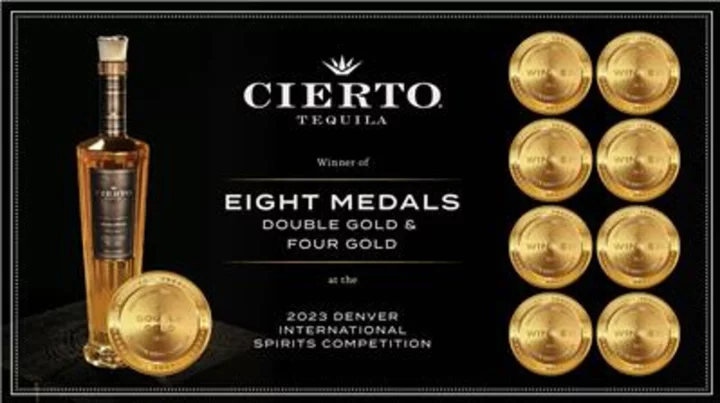
Cierto Tequila Wins Double Gold at the 2023 Denver International Spirits Competition
LOS ANGELES--(BUSINESS WIRE)--Jun 5, 2023--
2023-06-06 09:17

Target on the defensive after removing LGBTQ+-themed products
Target once distinguished itself as being boldly supportive of the LGBTQ+ community
2023-05-25 05:47

Fukushima water release plan clears last regulatory hurdle in Japan
Plans to discharge treated water from the Fukushima nuclear plant cleared their last regulatory hurdle in Japan on Friday, as China said it would ban...
2023-07-07 15:54

Phoebe Philo unveils hotly-anticipated first collection of her own
The acclaimed fashion designer Phoebe Philo, the former creative director of Celine, has returned with a much-anticipated collection of her own.
2023-11-01 00:19
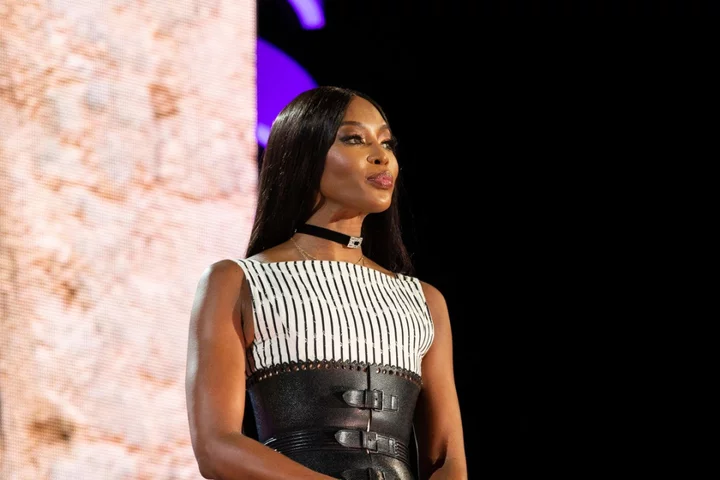
What we know so far about Naomi Campbell’s Pretty Little Thing collection
Supermodel Naomi Campbell has shared a glimpse of the new collection she’s designed for Pretty Little Thing. The 53-year-old shared a black and white close-up shot of herself wearing a black leather jacket on Instagram, with “Pretty Little Thing designed by Naomi Campbell” written over it. The collection will drop on September 5 – just a few days before the start of New York Fashion Week, it might be launched with a star-studded catwalk show. Pretty Little Thing first announced the collaboration in June, and the new collection will be “paying homage to Naomi’s legacy and iconic signature style”, according to the brand. “The muse, the supermodel, the moment,” is how Campbell is described on the Pretty Little Thing website, where customers can sign up to find out when the collection drops. It also said: “A supermodel amongst supermodels, Naomi’s cultural impact within the industry is unrivalled. This is the iconic collaboration you won’t want to miss.” September is set to be a big month for Campbell, as it coincides with fashion month and the release of new Apple TV+ docuseries, The Super Models. The documentary will track the rise of models Campbell, Cindy Crawford, Linda Evangelista and Christy Turlington in the 1980s, in a four-part series released on September 20. The four fashion icons featured on the September 2023 cover of British and American Vogue. Talking about the bond they formed, Campbell told British Vogue: “There was a sisterhood there, defined by caring and loyalty: when one is down you pick the other one up.” While there is little indication of what Campbell’s Pretty Little Thing designs will look like, they could channel Nineties minimalism – an aesthetic she helped popularise. This might mean mini dresses, strappy tops and simple silhouettes – or it could channel her more recent style obsession for chic tailoring. Campbell has modelled for the likes of Prada, Yves Saint Laurent and Burberry, and recently announced the birth of her second child, a baby boy. She’s not the first celebrity to collaborate with Pretty Little Thing. Love Island star Molly-Mae Hague has designed collections for the brand – earlier this year stepping down from the role of creative director – as have musicians Teyana Taylor, Lil Kim and Doja Cat. Read More Charity boss speaks out over ‘traumatic’ encounter with royal aide Ukraine war’s heaviest fight rages in east - follow live Taking adult education classes may lower risk of dementia, study suggests Indiyah Polack: I didn’t want to go on Love Island because of my acne Everything you need to know about the UK’s first womb transplant
2023-08-23 18:23

NYT Connections today: See hints and answers for October 30
Connections is the latest New York Times word game that's captured the public's attention. The
2023-10-30 10:55
You Might Like...
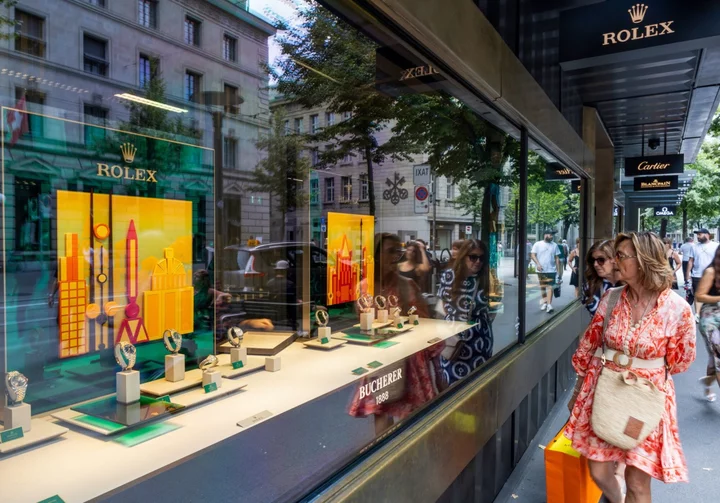
Century-Old Swiss Watch Dynasty Ends With Scion Selling to Rolex

Yelp and Texas officials square off over free speech and anti-abortion centers

'America's Got Talent': Plastic surgeon claims judges allegedly spent $173K on cosmetic work

Socialize, exercise and eat your vegetables: The Mediterranean lifestyle helping people live longer

How many years has Danny Trejo been sober for? 'Machete' star struggled with alcohol and drug addiction as a teenager
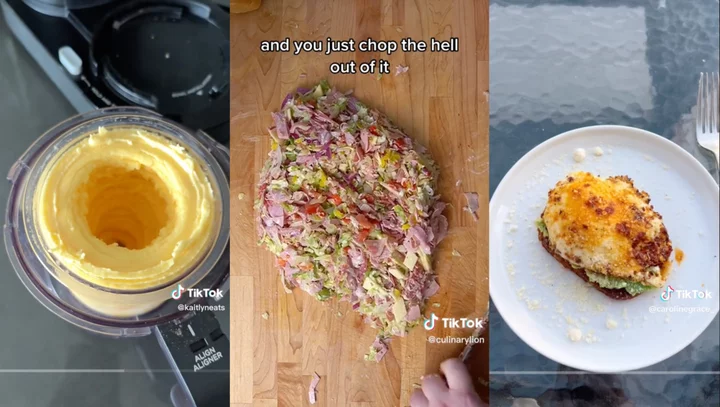
The best TikTok food trends of 2023 (so far_

Cyara Expands Sales Leadership Team with the Appointment of Fred Penteado as VP of Revenue Strategy & Operations

Ethan Hawke took a Greyhound bus to Toronto film festival
